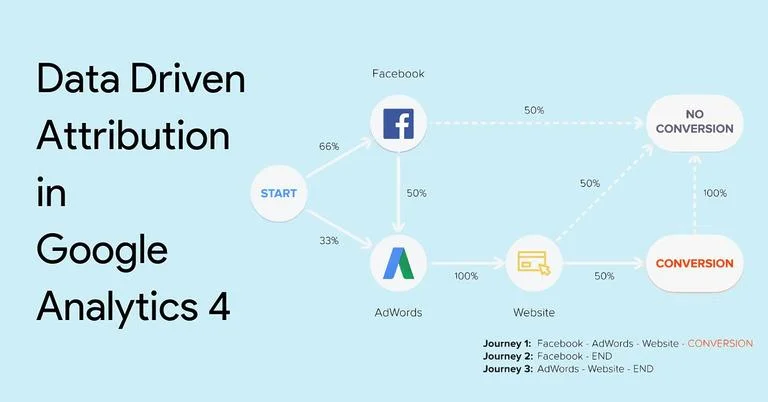Are you curious about the latest buzz surrounding Google Analytics 4 (GA4)? One of the most talked-about features is its new attribution model. In this article, we’ll explore what makes GA4’s attribution model stand out from its predecessors and how it can help you gain deeper insights into user behavior and optimize your marketing efforts.
The Challenge of Attribution Models in Universal Analytics (UA):
To understand the significance of GA4’s attribution model, it’s essential to recognize the limitations of the previous version, Universal Analytics (UA). UA heavily relied on last-click attribution, giving all the credit for a conversion to the last touchpoint before a user converted. This approach didn’t consider the multiple touchpoints a user might interact with before conversion, leading to an incomplete understanding of the user journey. Although UA offered various attribution models, choosing the right one was often a challenge.
GA4’s Data-Driven Attribution Model:
In contrast, Google Analytics 4 has introduced Data-Driven attribution as the default model, leveraging machine learning algorithms to assign credit. This model considers all user touchpoints and attributes credit based on their relative impact on conversions. The accuracy of this model improves over time as it is data-driven, making it a more robust and long-term solution.
Key Features of GA4’s Attribution Model:
Cross-Device and Cross-Platform Tracking: GA4 can track users across different devices and platforms, providing a complete view of the customer journey and attribution. This is possible due to GA4’s user-centric data model, which assigns a unique user ID to each user, regardless of the device or platform they use.
Machine Learning-Based Attribution: GA4 employs machine learning to analyze user behavior and assign credit to the most influential marketing channels. This approach is more accurate and flexible compared to the rule-based attribution model used in UA.
Event-Based Tracking: GA4 tracks user interactions as events, offering more granular data than pageview-based tracking. This allows tracking specific user actions and attributing them to the appropriate marketing channels.
Customizable Attribution Models: GA4 allows businesses to create custom attribution models tailored to their specific needs and goals. This level of customization was not possible in UA, which had a limited set of predefined models.
Conversion Modeling: GA4’s conversion modeling predicts which marketing channels are likely to drive future conversions based on past behavior, enabling more effective resource allocation and marketing optimization.
Benefits of Data-Driven Attribution:
Data-Driven Attribution in GA4 considers the different paths users take to conversions and identifies the most effective marketing channels. This insight empowers businesses to optimize their marketing spend. For example, if a particular channel significantly influences conversions, you can allocate more budget to it.
Furthermore, Data-Driven Attribution helps understand the impact of non-marketing touchpoints on conversions. For instance, a specific webpage on your website may effectively drive conversions, even if it’s not part of your marketing funnel. This insight guides website optimization for conversions.
Conclusion:
In summary, GA4’s enhanced attribution modeling capabilities are a game-changer for businesses of all sizes. By harnessing the power of this tool, you can gain valuable insights into user behavior and conversion patterns, enabling more informed decisions about your marketing spend. Embrace GA4’s new attribution model, and unlock the potential for optimizing your digital marketing strategies. If you’re eager to learn more about GA4, our team of experts is ready to assist you in maximizing the benefits of this powerful tool.





